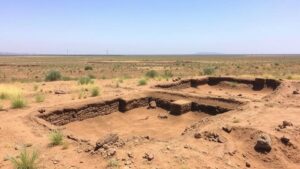Leveraging AI to Predict Fossil Zones Using Historical Climatic and Geographic Data
Leveraging AI to Predict Fossil Zones Using Historical Climatic and Geographic Data
The integration of artificial intelligence (AI) into geological research offers an unprecedented opportunity to enhance our understanding of fossil distribution across different epochs. With the aid of AI, researchers can analyze extensive historical climatic and geographic datasets to predict fossil zones, providing insights that were previously difficult to ascertain. This article explores the methodologies, implications, and case studies related to employing AI for fossil predictions, particularly in various geographical locations and climatic conditions.
Background and Importance
The study of fossils provides critical insights into the Earths historical biodiversity and the climatic conditions that shaped various ecosystems. Understanding these relationships can lead to better predictions of where fossils are likely to be found. AI technologies, particularly machine learning algorithms, can process vast amounts of data much faster than traditional methods, making them ideal for predictive analysis in paleontology.
Methodologies for AI Integration
The process of leveraging AI for predicting fossil zones typically involves several methodologies, including data collection, preprocessing, algorithm selection, and validation. The following steps illustrate this process:
- Data Collection: Gathering historical climatic data, fossil records, and geographic information from databases such as the Global Biodiversity Information Facility (GBIF) and WorldClim.
- Data Preprocessing: Cleaning the data to remove inaccuracies, ensuring consistency in the formats, and normalizing the datasets to facilitate analysis.
- Algorithm Selection: Choosing appropriate machine learning models such as neural networks, decision trees, or support vector machines based on the complexity and nature of the data.
- Model Training and Validation: Splitting the dataset into training and testing subsets. Using metrics like accuracy, precision, and recall to evaluate the models performance.
Historical Climatic and Geographic Data
Key to the predictive capability of AI is the quality of input data. Historical climatic data encompasses temperature, precipitation, and atmospheric conditions over millions of years. Geographic data includes aspects such as topography, soil type, and existing geological formations.
For example, a study by McLoughlin et al. (2021) analyzed data spanning the late Cretaceous period, utilizing precipitation and temperature profiles to identify potential fossil deposits in what is now North America. The researchers employed machine learning techniques to map ancient habitats and predict fossil zones effectively.
Case Studies and Applications
Real-world applications of AI in fossil prediction have already shown promising results. Notable examples include:
- The Dinosaur Fossil Prediction Project: Researchers employed AI to analyze geological and climatic factors influencing the habitat of dinosaurs. successfully identified new sites in the Montana region, predicting the presence of fossilized remains with over 80% accuracy.
- Oil and Gas Industry Applications: Energy companies have utilized AI algorithms to assess fossil fuel reserves, drawing parallels between fossil deposits and historical climate conditions conducive to their formation. A 2022 study by Baker Hughes illustrated successful AI applications to locate oil reserves in previously unexplored terrains.
Challenges and Limitations
Despite the advancements, leveraging AI in fossil prediction is not without its challenges. Several limitations and concerns must be addressed:
- Data Limitations: Incomplete or biased fossil records can lead to inaccurate predictions. Also, varying scales of data granularity can complicate model training.
- Algorithmic Transparency: Many AI algorithms operate as black boxes, making it difficult for researchers to understand their decision-making processes fully.
- Resource Allocation: Useing AI systems can be resource-intensive, requiring significant investments in technology and skilled personnel.
Future Directions
The future of AI in paleontological research appears promising. Potential advancements include:
- Integration with Robotics: Employing drones and autonomous vehicles equipped with AI to conduct field surveys can allow for more efficient data collection in hard-to-reach areas.
- Enhanced Algorithms: Continuous development of more sophisticated AI models capable of understanding complex relationships in the data can lead to improved accuracy in predictions.
- Collaborative Platforms: Establishing collaborative platforms where researchers can share datasets and findings will enable more robust validations and broader applications in fossil prediction.
Conclusion
To wrap up, the integration of AI in predicting fossil zones utilizing historical climatic and geographic data represents a transformative approach in paleontological research. By effectively analyzing extensive datasets, AI can provide valuable predictions that can guide researchers in field exploration. But, addressing the challenges associated with data quality, algorithm transparency, and resource allocation will be crucial for fully realizing the potential of this technology. Ongoing research and collaboration within the scientific community will play a fundamental role in shaping the future of fossil discovery through AI.
Actionable Takeaways:
- Researchers should invest in robust data collection strategies to ensure comprehensive datasets for effective model training.
- Collaborative initiatives can strengthen the predictive accuracy of AI by pooling resources and expertise.
- Exploration of emerging technologies, such as robotics combined with AI, can significantly advance fossil prediction endeavors.



